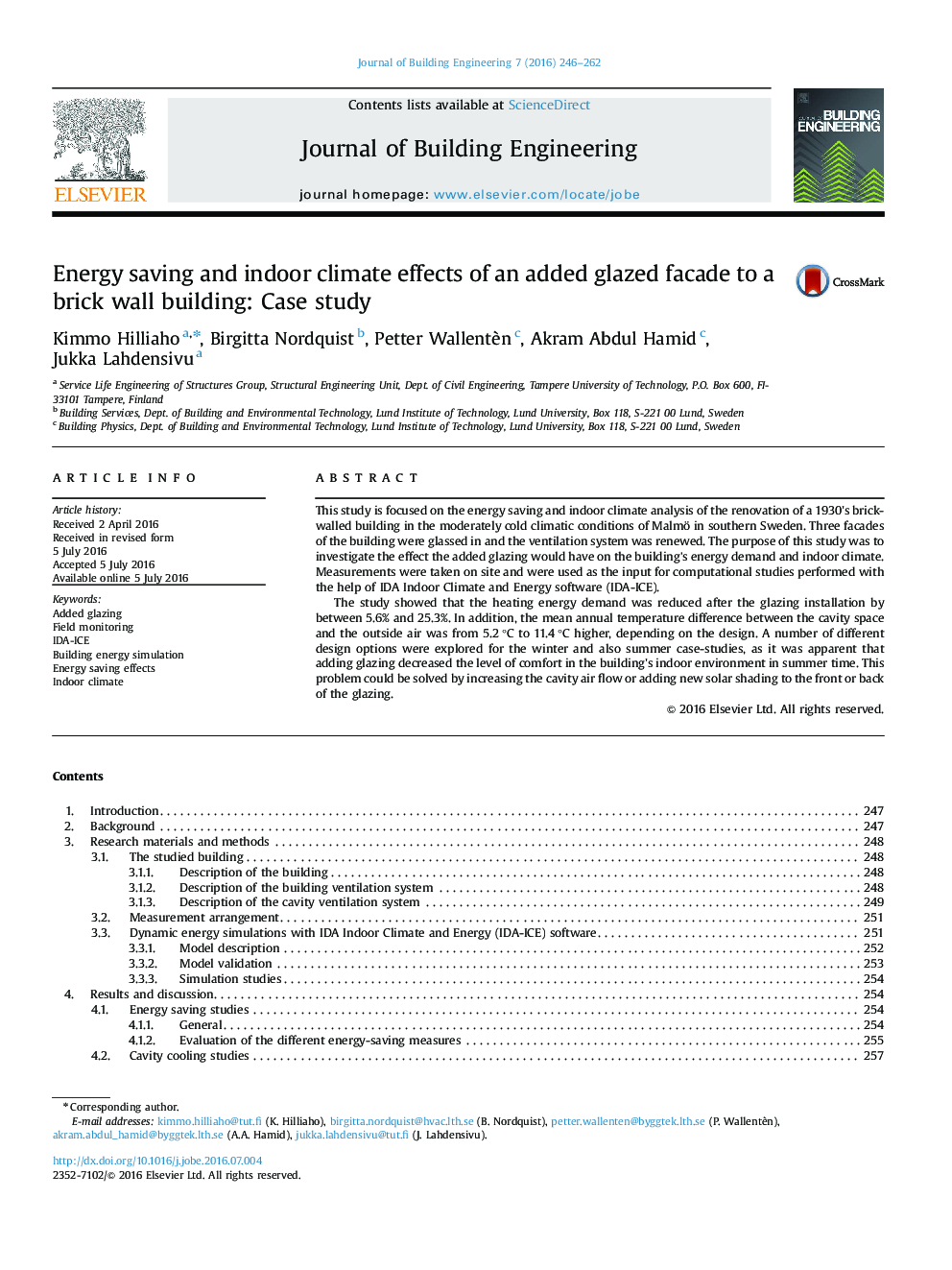| Article ID | Journal | Published Year | Pages | File Type |
|---|---|---|---|---|
| 283773 | Journal of Building Engineering | 2016 | 17 Pages |
•A building with added glass façade was studied with measurements and simulations.•The study combines the building envelope and ventilation-related measures.•Design options to decrease energy use and improve indoor climate were explored.•The energy saving effect of the added glazing ranged from 5.6% to 25.3%.•The cavity mean temperature was from 5.2 °C to 11.4 °C higher than outside on average.
This study is focused on the energy saving and indoor climate analysis of the renovation of a 1930's brick-walled building in the moderately cold climatic conditions of Malmö in southern Sweden. Three facades of the building were glassed in and the ventilation system was renewed. The purpose of this study was to investigate the effect the added glazing would have on the building’s energy demand and indoor climate. Measurements were taken on site and were used as the input for computational studies performed with the help of IDA Indoor Climate and Energy software (IDA-ICE).The study showed that the heating energy demand was reduced after the glazing installation by between 5.6% and 25.3%. In addition, the mean annual temperature difference between the cavity space and the outside air was from 5.2 °C to 11.4 °C higher, depending on the design. A number of different design options were explored for the winter and also summer case-studies, as it was apparent that adding glazing decreased the level of comfort in the building's indoor environment in summer time. This problem could be solved by increasing the cavity air flow or adding new solar shading to the front or back of the glazing.
